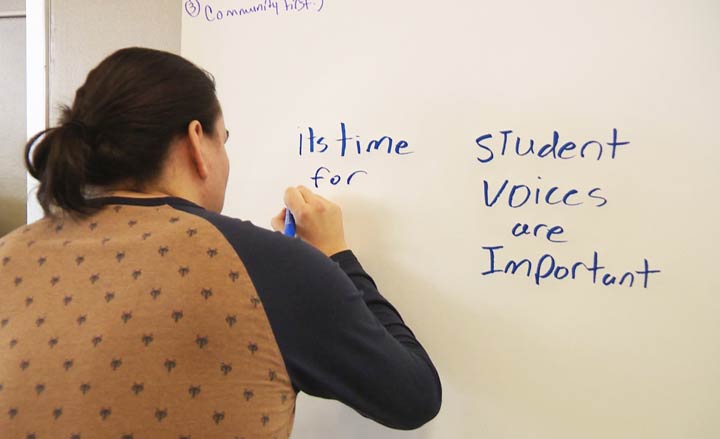Following up on a national forum held at the University of Saskatchewan (U of S) in 2015, students, staff and faculty gathered in Saskatoon on Tuesday to consider the school’s role in reconciliation.

Dallas Fiddler learned firsthand the benefits of indigenous inclusion at the U of S after he moved to Saskatoon from the Waterhen Lake First Nation, north of Meadow Lake, Sask.
READ MORE: U of S, National Centre for Truth and Reconciliation sign partnership
“Nobody really wants to leave their home to pursue an education,” Fiddler, who is a third year political studies student and president of the Indigenous Students’ Council, said.
“It’s definitely a culture shock.”
He was one of more than 300 people who took part in the day-long forum, which celebrated successes and considered future opportunities for reconciliation.
At least one dozen of the 94 calls to action outlined in the final report of the Truth and Reconciliation Commission (TRC) are related to post-secondary education.

Get breaking National news
The national Building Reconciliation forum in November 2015 was a response to the report’s calls to action.
The U of S has seen a “marked increase” in the number of self-declared aboriginal students enrolling, according to university president Peter Stoicheff.
He noted other examples, like commitments to indigenous course content, the year-old Gordon Oakes Red Bear Student Centre and last month’s memorandum of understanding signed with the Federation of Sovereign Indigenous Nations (FSIN).
READ MORE: Professional Development School formed to better equip indigenous teachers
Future opportunities include continuing to increase indigenous faculty numbers and improve existing relationships with elders.
“We have a real community of giving elders, but I would like to see that those relationships become more formalized,” Stoicheff said.
At least 2,500 First Nations, Métis and Inuit students are currently enrolled at the U of S.






Comments